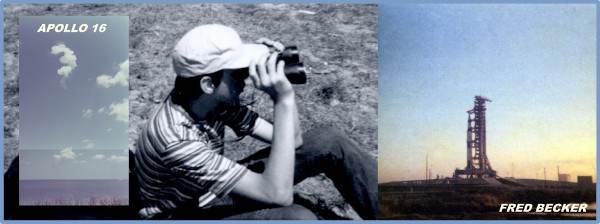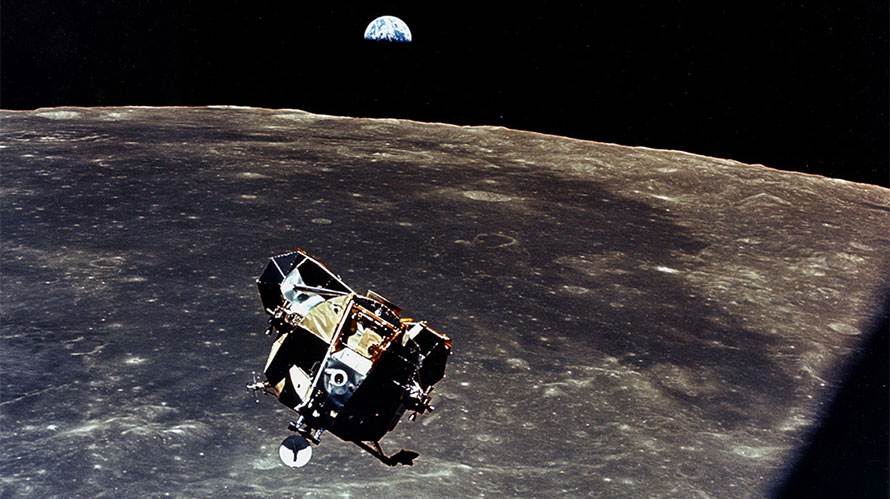Sacramento L5 Society (SacL5) Breakfast on the Moon Celebrates Apollo 16 with a Discussion of Space Archaeology
By Robin Scott
SacL5 Society hosted and SacL5 President Joseph Bland moderated the Apollo 16 50th Anniversary Celebration of Breakfast on the Moon (see full video) on Saturday, April 23, 2022. To close-out the celebration, Fred Becker, editor of the NSS newsletter Downlink, shared his original photos and recording of the uniquely commentated Apollo 16 launch.
Lisa Westwood, registered professional archaeologist, and Beth O’Leary, Ph.D. archaeologist and pioneer in space archaeology, presented “Space Archaeology.” Their presentation focused on the Tranquility Base area, which the New Mexico Space Consortium and NASA funded for archaeological research. Michelle Wilmot, Economic Development, Communications. and Public Affairs for the city of Kent, Washington, spearheaded the Washington state historic landmark status for the Apollo 15, 16, and 17 mission lunar rovers. Michelle Hanlon, President of the NSS, Space Lawyer and Professor, and Cofounder of For All Moonkind, the only organization in the world focused on protecting cultural heritage in outer space, communicated current legal perspectives for preservation and protection of the Apollo landing sites for human heritage.
Space Archaeology
At the inception of the meeting, O’Leary defined Space archaeology — “A systemic scientific study of relationships between nonrenewable material remains of human spaceflight across time and space through the application of archaeological method and theory.” Westwood and O’Leary acknowledged Apollo 12 astronauts Alan Bean and Pete Conrad performed the first study of archaeology on the Moon.
Because of the additional 21.6 kgs of Moon rock and regolith collected to bring to Earth, the Apollo 11 astronauts jettisoned mission equipment back to the Moon, which created an archaeological site. O’Leary and Westwood created an archaeological-site map of the Apollo 11 mission area including the “toss zone” of these artifacts to document and preserve archaeological information. They determined the artifacts left on the Moon by reviewing the inventory NASA sent to the Moon and brought back to Earth. O’Leary created an assemblage of the types of artifacts: lunar module, commemorative, experimental, mission tools and gear, and waste that NASA left on the Moon.
Westwood explained that historical sites must retain integrity and show historical significance. Aspects of integrity are location, materials, design, setting, workmanship, feeling, and association. The Tranquility Base site would lose integrity if the Apollo mission artifacts were brought back to Earth. Tranquility Base is considered for inclusion in the National Register of Historic Places because of sufficient integrity. The Tranquility Base site meets the National Register of Historic Places criteria, established in federal law, with these attributes:
- A — Humans stepped foot on another celestial body and returned to Earth safely for the first time. (Astronaut tracks are still visible with a thin cover of Moon dust because of the stability of the Moon environment.)
- B — Apollo Astronauts are important humans in history.
- C — Unique and mission specific tools and equipment (now artifacts), representing the technology of the cold-war era, were used on the lunar surface.
- D — The artifacts and their special relationship and distribution across the lunar landscape provide important information about human activity during an important historical event in human history.
O’Leary and Westwood worked with the states of California and New Mexico, which recognize historic sites outside their state border and relevant to the people and culture within the state, and worked with Wilmot for the state of Washington landmark status for the Apollo 15, 16, and 17 mission lunar rovers. The National Register of Historic Places includes archaeological sites involved in the research and development of space exploration, which exist within every state of the U.S. and Puerto Rico.
Hanlon verified the “only thing that we have to protect our artifacts and sites is the concept of ‘due regard’ of others while performing space activities.” Hanlon specified that Article ll of the Outer Space Treaty implies “no national appropriation” and “you cannot claim territory in space by sovereignty or by any other means.” Hanlon confirmed making Tranquility Base a U.S. State Heritage site would be claiming territory by a means.
O’Leary helped write the guidelines for NASA’s Recommendations to Space-Faring Entities: “How to Protect and Preserve the Historic and Scientific Value of U.S. Government Lunar Artifacts,” released on July 20, 2011. O’Leary and Westwood estimated the total amount of cultural material left on the Moon to be 400-metric tons. By way of For All Moonkind, Hanlon is advocating for and analyzing issues related to the development of an international convention to protect all human heritage in space, not just U.S. missions. For All Moonkind worked on the One Small Step to Protect Human Heritage in Space Act, which says the NASA guidelines will be binding on any entity that works with NASA and goes to the Moon.
Westwood said the International Treaties such as the Outer Space Treaty (1967) and Moon Agreement (ratified 1984) govern the Moon. Nations who signed these treaties retain jurisdiction and control of their own property or material “while it is in outer space, on a celestial body, or on the Moon,” but no one can claim ownership of the surface or subsurface of the Moon. However, in the case of human survivability other nations can use the property of another nation.
Hanlon explained when the Outer Space Treaty and Moon Agreement were made, only national space agencies went to space such that no one thought of commercial space and heritage. She said the Outer Space Treaty has the fundamental aspect of “freedom of exploration and use and access to all areas of celestial bodies,” which conflicts with the principle of trying to protect anything in space. Hanlon recognizes the United Nations Working Group is exploring the legal framework for mining the Moon and space resources in general.
Hanlon cited Section 9 — Preserving Outer Space Heritage — of the Artemis Accords which recognizes that humans have heritage on the Moon. She said 20 countries have signed the Artemis Accords; 18 nations have agreed humans have heritage on the Moon, which needs to be protected; and 193 nations recognize the importance of kinship for all humanity. Hanlon offered perspectives that the Apollo 11 Moon landing involved 60,000 people directly but all humanity indirectly, was watched live by 650-million people, and is considered a cultural event that united humanity.
Live Apollo 16 Launch Recording and Slide Show

To close out the celebration, Fred Becker, NSS Ad Astra Downlink editor, shared his story of Apollo 16. At the age of 16, Becker witnessed in person and captured the Apollo 16 launch on video on April 16, 1972. The evening before the launch, he was on the final public bus tour of the launch pad, Vehicle Assembly Building (VAB), Cape Canaveral launch pads, and the Kennedy Space Center Visitors Center.
The video starts at the visitors center museum and moves to the historic launch pad of Alan Shepard and Gus Grissom, the Air Force Space Museum, Pad 37, Pad 39 with Apollo 16, and then the VAB. Last, but not least, as Becker left Kennedy Space Center on foot and headed west along the NASA Causeway, he experienced the tremendous view of a crescent Moon setting in the west surrounded by the Orion constellation while searchlights from the launch pad reached out towards the Moon. Becker remembers this as “a tremendous experience.” After camping by the water in Titusville the night before the launch, Becker took the launch photos west of the pad in Titusville.
Becker said this is the only known recording of space author Martin Caidin doing a radio broadcast of a launch, but Caidin had done many early NASA launches. A highlight is this video contains audio from countdown to launch, and Becker captured the actual Saturn V liftoff sound by placing his tape recorder near a portable radio. Becker noted that Caiden’s voice shifted dramatically at the moment of liftoff, and Caiden then commentated the launch as if it was a horse race.
Having studied space for eight years already, Becker was well prepared as an adolescent to understand everything about the Apollo 16 event. Becker said he was honored to participate as a witness to “the initial golden age of space exploration.”



















